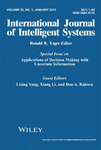A Coordinated Routing Model with Optimized Velocity for Train Scheduling on a Single-Track Railway Line
Abstract
Train scheduling aims to seek a set of space-time paths for multiple trains on a railway line such that resources can be utilized efficiently with respect to prespecified criteria. By representing the train trajectory through a time-space path in its space-time network, this paper proposes an integer programming model for train scheduling on a single-track railway line, in which velocity choice is particularly considered to further decrease the expected energy consumption and interactions between different trains, and the link energy consumption is derived by the Davis formula with respect to different train speeds. The proposed model is implemented in the GAMS optimization software to solve an approximate optimal solution. Numerical examples show that the optimal timetable with optimized velocities can further decrease the energy consumption and coupling effects in comparison to the fixed velocity based schedule.




